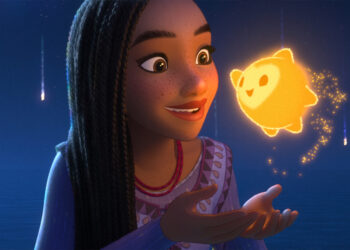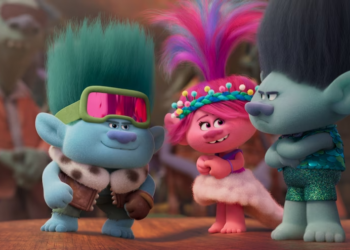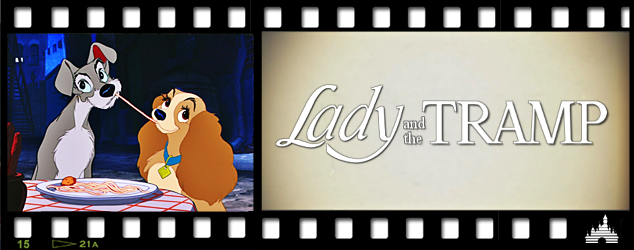
In 1937, legendary Disney storyman Joe Grant and his wife had a baby. Naturally, the baby became the apple of the Grants’ eye. Unfortunately, however, this meant that their Springer Spaniel, Lady, was briefly shunted aside. This was only temporary, of course, and Joe Grant didn’t think much of it until Walt and Lillian Disney came to the Grants’ home for dinner one night. Walt noticed a caricature Joe had drawn of Lady. Walt mentioned the drawing and told Joe, “You should build a story around this.”
Joe did so, taking the story of how Lady was briefly shoved aside and working it into a feature called, appropriately enough, Lady. Walt HATED it. He thought the story was too sweet and that Lady was too much of a goody two-shoes. The story was shelved, and Joe Grant went on to other things.
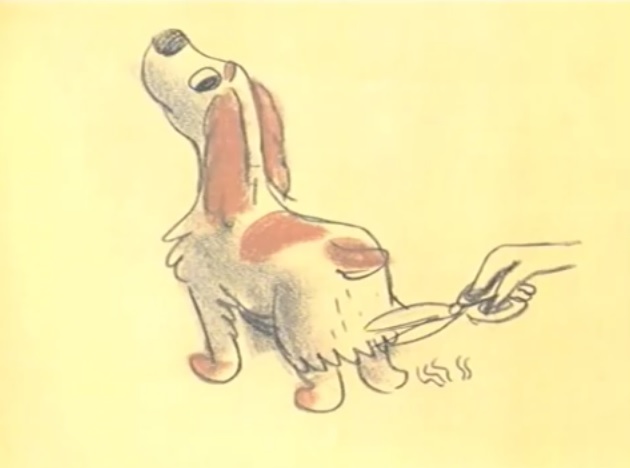
The project was revived in the early 1940s when Walt read a short story – Ward Greene’s “Happy Dan, The Whistling Dog” – in Cosmopolitan magazine. Walt’s mind went back to Grant’s original story and what he hadn’t liked about it. He thought that a cynical, world-weary character like Greene’s Happy Dan would give the story a little more bite and grit. Walt got in touch with Greene and bought the rights to the story. The story crew worked with the story for years, trying to find a way to work the cynical dog, Tramp, into the tale, but to no avail.
Eventually, Walt asked Greene to pen a novel that the story crew could build a movie from. Greene did so, and it was that story that eventually became Lady and the Tramp!
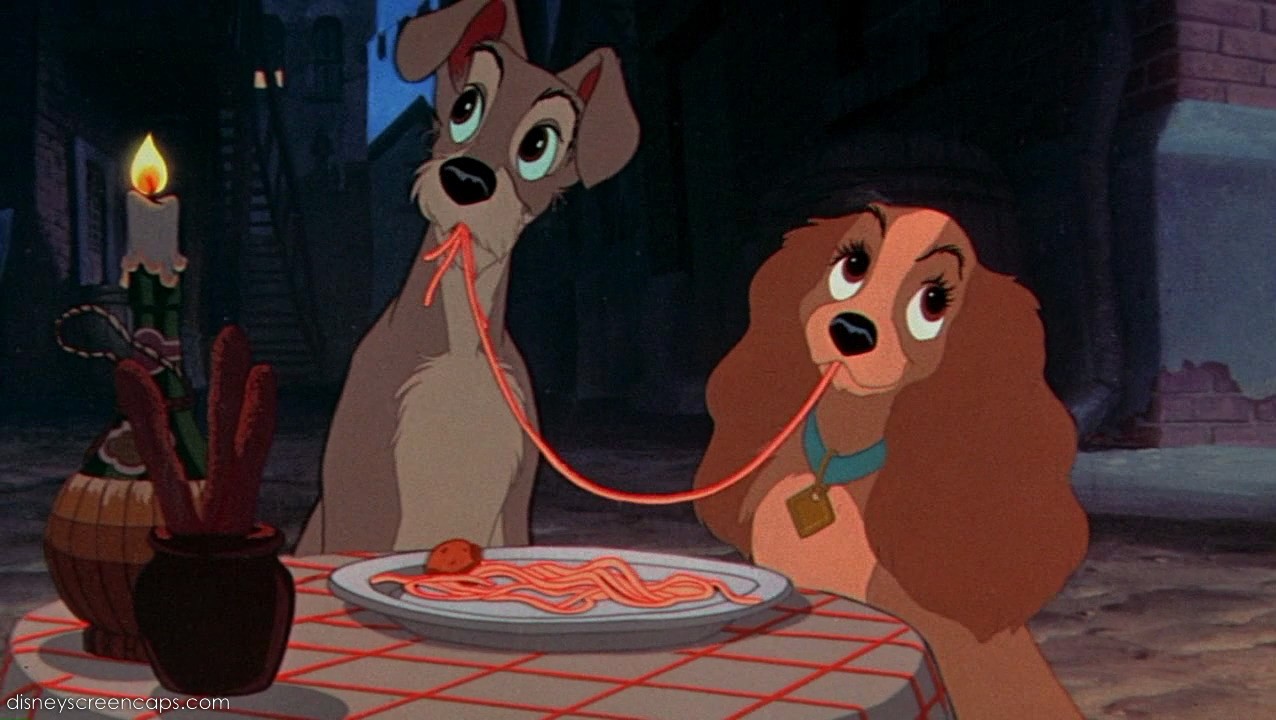
The film begins on Christmas Day 1909, as Jim Dear gifts his wife, Darling, with a cocker spaniel puppy. Darling promptly names the pup Lady, and Lady promptly wins her masters’ hearts. She also quickly makes friends with her neighbor dogs Jock, a feisty Scottish terrier, and Trusty, a bloodhound who once tracked down fugitives but has now lost his sense of smell.
Life is good for Lady until Jim Dear and Darling welcome a baby to their family. Lady is initially brushed aside. Eventually, however, things go back to normal. However, that’s just when Aunt Sally comes to town. Aunt Sally is there to babysit the baby while Jim Dear and Darling go out of town, and she’s brought her two mischievous cats, Si and Am, with her. The cats wreak havoc on the house, and Lady is blamed. Aunt Sally takes Lady to the pet shop and has her muzzled. Hurt and terrified, Lady runs from the shop and bumps into Tramp, a streetwise stray who she met earlier. Tramp helps her get the muzzle off and shows her a beautiful night on the town. Over the course of the evening, Lady and Tramp fall in love.
However, Lady is torn on many levels. Tramp asks Lady to leave her family – who, from his POV, obviously don’t love her anymore – and see the world with him. Lady feels obligated to stay home, but the idea of seeing the world is tempting. On top of that, during a side trip to the pound, Lady hears about Tramp’s womanizing past, which obviously casts doubt on her current relationship. Needless to say, Lady has several problems to work through before the film is finished!
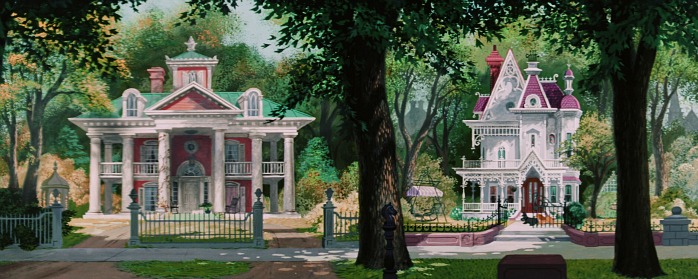
Lady and the Tramp was originally Joe Grant’s idea, but Walt Disney’s touch is all over it. Along with wanting to tell a sweet, romantic story, Walt constructed a beautiful valentine to his boyhood town of Marceline, Missouri, and his cherished memories of growing up there. The love for the period and the setting is obvious in the art. Each background is so visually appealing and intricately detailed that it could be hung in a museum.
The fact that Lady and the Tramp was shot in Cinemascope only adds to the beauty. The new widescreen process gave the artists even more room to work with, and they were more than up to the task. Every bit of the frame is full of interesting things to look at. Cinemascope also meant extra work for the animators, but the Nine Old Men were more than up to the task! The animation is topnotch, especially the work on the pups like little Lady.
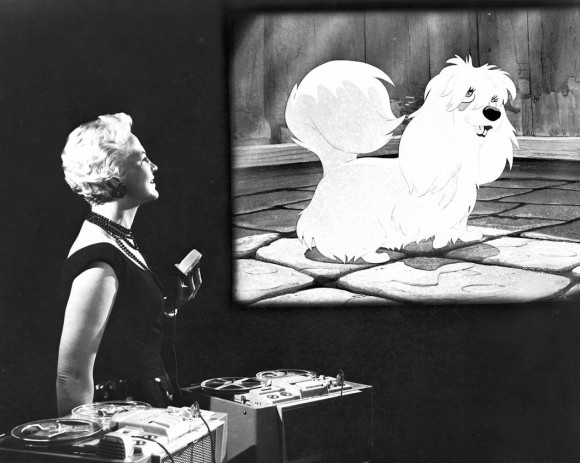
We’re almost done, but I couldn’t let this article pass without mentioning the songs! Lady and the Tramp really does a great job depicting America as a melting pot of different cultures and nationalities, and the songs depict that, featuring tunes of different styles and world cultures, from jazz (“He’s A Tramp”) to Italian love songs (“Bella Notte”) to Oriental music (“We Are Siamese”) to even hymn-like music (the rendition of “Peace On Earth/Silent Night” that opens the film). Each song lends something special to the mood of the film.
So, summing up, Lady and the Tramp is a wonderful valentine, unlike anything we’ve seen in the Disney Canon up to this point. It’s not a fairy tale, there’s no magic involved, and, even though there are songs, it’s not a musical. It’s a simple, beautiful love story and a valentine to a lost period of America’s past. Of course, it’s also a work of art. It’s a very special addition to the Disney Animated Canon!



